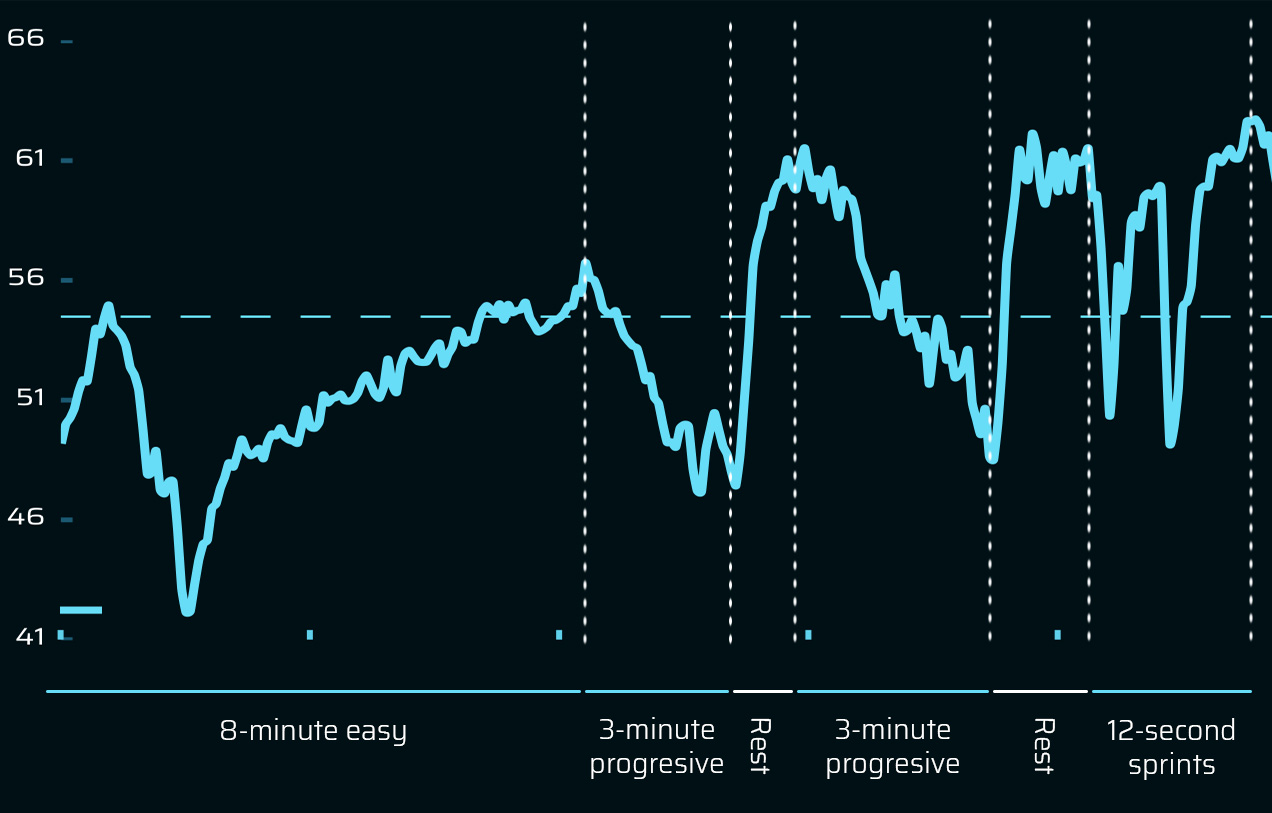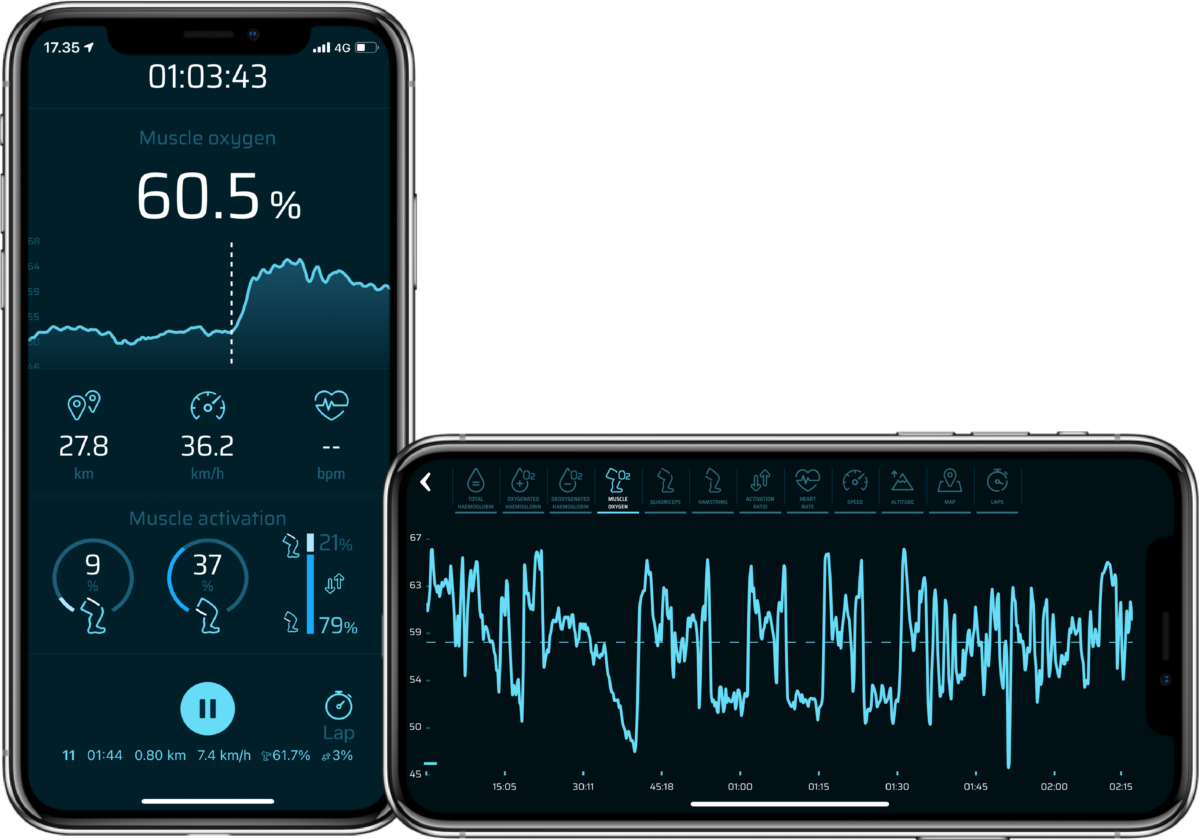Prepare your workout
Warm-up
Prepare your workout with GRASPOR. Why warming up matters, why you should do it, and how you can improve what yourea already doing.
The basics
Riding at an easy pace out of town to your favorite route is not enough especially if you’re preparing for a hard ride or hill sprints with your buddies. You need a proper warm-up with a mix of easy pace, progressive efforts, and high intensity bursts.
The easy pace is an important part in “waking up” your body, and telling your heart and lungs that they need to go to work to supply oxygen to your muscles.
But it’s equally important to have some high intensity to get the message to your muscles that there is hard work ahead for the, and prepare your legs for the upcoming intensity
If you don’t warm up properly, you’ll most likely feel it in your legs for the first few efforts. If you know this feeling, it’s a sign that your body is working harder than it should to produce the effort.
If you skip the warm-up completely, you’ll also get more fatigued, which could impact the rest of your workout.
All in all the warm-up is part of preparing your body for the training session by increasing your capacity and minimize the risk of overstressing your body during the workout.
Actually, our own studies show that you should warm-up before each workout both intervals and longer endurance sessions and that you can increase your performance with up to 10% – to read the studies click the link below
Our reccomendation
Warming up is very individual, some need longer time, some need many efforts, and others only need a few.
We recommend at least somewhere between 25-30 minutes of warm-up time, like this:
8-10 minutes of easy riding – spin the legs to get started.
Transition into 2 x 3- minute progressive efforts. These efforts should start at an easy level and finish at FTP intensity.
Between each effort you should ride easily for a minute or 2.
Take 3-5 minutes at recovery pace after the last progressive effort.
Then do 2-3 sprints between 10-12 seconds. These should be very intense, but not max sprints. Take 1 minute recovery between each sprint.
Finish off with 3-5 minutes at recovery pace to get your heartrate down, and your muscle oxygen up .
When you take a look at your warm-up when you get home, you will be able to find out if it was enough for you, or if you should do more before your efforts.
Download our warm-up protocol for Zwift here
How do I know when I am warmed up?
The example below is how our warm-up protocol will affect the muscle oxygen.
During the first 8 minutes, your muscle oxygen will drop initially, but then rise over the second half. The reason for this initial drop is that you got on the bike, and started to ride, which increased the consumption of oxygen in your muscle, but after a few minutes when your heart is pumping harder, and you start to breathe quicker, the supply of oxygen has risen even more.

During the first 3-minute progressive effort we’re further affecting this process. We’re preparing the body for what’s ahead, and by doing a progressive effort, we’re effectively making the heart pump harder, and telling our body, it’s time to get to work. After the first progressive effort, the muscle oxygen increases a lot compared to after the 8 minutes of easy riding, so we can see that it made a big difference for the rider.
The second 3-minute progressive effort is another attempt at priming the body for the efforts ahead, without overstressing the muscles. The second effort still had an effect for the rider, but it was smaller than after the first one. This indicates that the rider wouldn’t benefit from another effort, but the only way to know for sure is to try it yourself.
The sprints are next on the menu.
These are to wake up the legs, and signal to the muscles that it’s time to work. The reason that the muscle oxygen doesn’t rise above the first time is due to the short recovery period. You can experiment with the duration of the recovery to see how big a difference another 1 or 2 sprints would do for you.
The most important thing about the warm-up is that you should continue until you can’t make the muscle oxygen reach a new higher number within a few minutes.
In this example, the rider’s max muscle oxygen level keeps rising throughout the intervals, as you can see after the third effort (1). If this happens to you, you should spend more time warming up. It’s also important to note that your fatigue level will impact the duration of your warm-up. If you’re completely fresh, you may only need 2 efforts, and 3 sprints. But if you’re fatigued, you may need 3 efforts and 4 sprints to get there.
Over time you will be able to see how fatigued you are based on your start values when you start your ride, or how the fatigue will influence how high you can get you muscle oxygen number during your warm-up.
Live tracking when warming up
When you are recording an activity and are looking at the live view, you are looking at 2 minutes worth of data, so figuring out if you are properly warmed up is simple enough. Here’s how to do it:
When looking at the live data you need to pay attention to your Muscle Oxygen on the screen. Make a mental note of the highest number. Over the next few efforts, you should see that this number increases. The goal is to increase your Muscle Oxygen as much as possible.
If you are properly warmed up, your Muscle Oxygen will return to the former baseline after an effort, if not, it will rise a little more. Continue your efforts if the baseline keeps stabilising at a higher level.
In the previous example, you can see that the maximum muscle oxygen keeps increasing after both the progressive efforts, and the final sprint. It is important to note that during the warm-up your recovery pace should be at the same power numbers, as this will make it much easier for you to find out if your muscle oxygen keeps rising. If you ride at 100 watts between some of the efforts, and 150 between others, your muscle oxygen likely won’t return to the max level.

Book a GRASPOR expert
If you have any questions, or just want to learn more about warming up or GRASPOR in general, you can book a timeslot with our product manager below.


